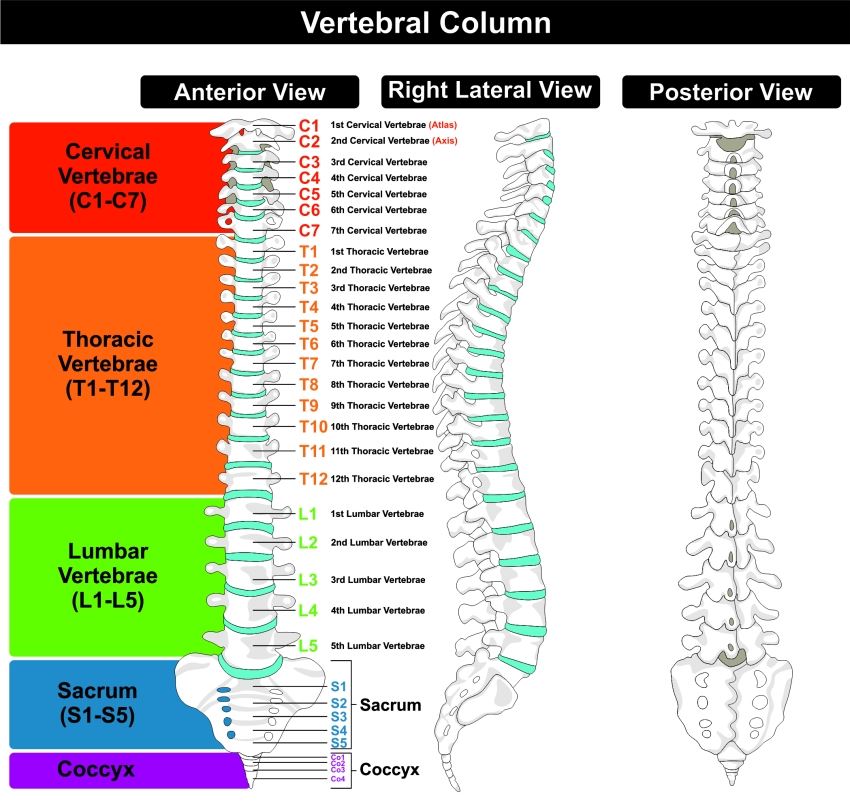
Back and Spine Injury Lawyer
Call Our Spokane Law Firm Today At (509) 444-4444!
When you or a loved one is grappling with a serious back or spine injury, we understand the challenges you are facing that extend from physical pain to financial turmoil. In the wake of a mid-back, low-back, or spinal cord injury, life can feel like it’s been turned upside down. A back injury can cause profound impacts not only on the injured person but the entire family. Beyond physical pain, there are mounting medical bills, lost wages, and a pervasive sense of uncertainty about the future.
Sweetser Law Office is different from most law firms. We are your allies, dedicated to supporting you through this challenging time and fighting for the justice you deserve. We have decades of experience handling back and spine injury cases throughout Spokane, Eastern Washington and North Idaho. Most of our cases focus on the medicine involved in mid-back, low-back, and spinal cord injuries.
Like most all of the people we represent, you’ve likely played by the rules your entire life believing you would never need the services of a personal injury attorney. Now you are up against an insurance company that treats you as just another claim number. You cannot afford to go without a strong advocate in your corner. Sweetser Law Office is proud to be that advocate for you.
Spine pain can wreak havoc on the quality of life. It can be especially painful, aggravating, and long-lasting.
Understanding the medical intricacies of your case and effectively presenting them to a jury are skills that are honed through time and experience. Sweetser Law Office had a proven track record handling even the most severe and complex spinal cord injury cases. Our goal is to ensure the maximum recovery you deserve under the law.
The Right Choice is to Hire the Best
Our Spokane-based law firm provides experienced, compassionate, and committed representation to the seriously injured. We are here to help navigate the legal complexities you are facing, along with helping you rebuild and recover. Contact us today at (509) 444-4444 to schedule a free consultation with one of our spine injury lawyers.
Insurance companies will attempt to settle your claim swiftly and at minimal cost. Without experienced legal counsel, the insurance company will not take you seriously and will not pay what you deserve. Insurance companies communicate in terms of risk assessments, and without a dedicated injury lawyer on your side you will not be treated fairly. With Sweetser Law Office, you will have a dedicated legal team that levels the playing field. We will safeguard your legal rights and ensure your family’s security.
Your Next Steps
Contact Sweetser Law Office today at (509) 444-4444 for a free consultation with one of our spine injury lawyers. Let us discuss your case, understand your unique challenges, and chart a path forward.
Areas of Back and Spine Injury Expertise:
- Spinal Cord Injuries
- Bulging, Herniated, Slipped, or Ruptured Discs
- Cauda Equina Syndrome
- Vertebrae or Compression Fractures
- Impinged Nerves
- Nerve Root Compression (Radiculopathy)
- Whiplash and whiplash-associated disorders
- Cervical, thoracic, or lumbar displacement
- Spinal stenosis or narrowing of the spinal canal
- Spondylolisthesis, Shifting, misalignment, or traumatically induced scoliosis
- Radiculopathy and chronic myofascial pain syndrome
- Persistent facet joint pain or facet joint syndrome
- Traumatically induced early-onset arthritis
- Paralysis and Quadriplegia
Understanding Damage to the Back and Spinal Cord
The spine is one of the most complex parts of the body. In many ways, the back is the foundation for the entire human body, and the hub of the central nervous system. Damage to it can have far-reaching consequences, including consequences to the rest of the body. The nerves of the spine relay pain sensory signals throughout the body, so an injury to the back that disrupts the nerve pathways often affects function in other areas of the body as well.
Damage to the spinal cord often affects the bundle of nerves that runs through the backbone. Because the nerve network in a human body transmits sensation and controls movement throughout the body, damage to it can cause loss of mobility and feeling below the injured area, and can be fatal in catastrophic accidents.

Our backbone, the spine, is composed of a column of 33 bones and tissue that extends from the skull to pelvis. The spinal bones, which are called vertebrae, protect and enclose the bundle of nerves and tissues known as the spinal cord. Between each vertebra in the spine is a band of cartilage that serves as a shock absorber, called intervertebral discs. An injury to one of the vertebrae, discs or even the spinal cord can be debilitating and painful, causing loss of work and difficulty performing regular daily activities, along with diminishing the enjoyment of time spent with family, friends, doing hobbies and sleeping. In general, the higher up on the spinal cord where the injury occurs, the greater the side-effects.
The spine's vertebrae closest to the brain contains our High Cervical Nerves (C1-C4). The next set of vertebrae in the spine are the Low Cervical Nerves (C5-C8). The center of a person’s spine contains the Thoracic Vertebrae (T1-T12), which is the area of the spine that controls stability, allows a person to sit and stand upright, and gives support for all of the organs in the upper torso. Directly beneath the low cervical nerves the Lumbar Nerves (L1-L5), which provide the strength and an ability to lift, bend, twist, and turn. The lowest point of a person’s spine contains the Sacral Nerves (S1-S5).
Any trauma that compresses, pulls, pushes sideways or cuts the spinal cord can cause spinal cord injury. At the neck level, spinal cord injury can impair breathing and paralyze the arms, torso, and legs (quadriplegia). Lower in the spine, spinal cord injury can cause weakness and loss of movement or feeling in the lower parts of the body and legs (paraplegia). A severed spinal cord can never be repaired.
Damage to the spinal cord or structure of the back can affect you for the rest of your life and gets worse over time.
Symptoms of Back or Spine Injury
- Loss of feeling in the chest or limbs
- Restricted range of motion
- Pain with movement
- Loss of bowel or bladder control
- Muscle spasms, weakness, or atrophy
- Radiating pain into limbs
- Swelling and circulatory problems
- Breathing difficulties
- Disruption or loss of sexual function
- Trouble sleeping, headaches, or nausea
- Numbness, tingling, or sharp sensations
Causes of Back or Spine Injury
Back and spine injuries are often caused by sudden trauma or repetitive stress. Common causes include car accidents, falls, sports injuries, workplace accidents, medical malpractice, and defective products.
Nearly 350,000 Americans live with spinal cord injuries. Approximately 18,000 new back and spinal cord injuries are diagnosed each and over 75 percent of the injuries occur in men under the age of 50. On average, less than one-third of those with spinal cord injuries can walk up a flight of stairs even after a year of treatment. More than half are confined to a wheelchair, according to the National Spinal Cord Injury Statistics Center.
We will fight to hold the responsible party accountable for your injuries and losses. Contact us today at (509) 444-4444.

Experience Small-Firm Care with Big-Firm Clout
-
Client-Centered Approach
At Sweetser Law Office, we prioritize your needs and well-being, treating each client with the respect, empathy, and personalized attention they deserve.
-
Relentless AdvocacyWe are dedicated to standing up for our clients, ensuring that our clients receive the justice and full compensation they are entitled to.
-
Experienced LeadershipWith over 35 years of legal expertise, we bring a wealth of knowledge and a track record of success to every client's legal journey.
-
Unwavering IntegrityWe believe in thorough preparation, honest communication, and ethical representation, working tirelessly to achieve the best possible outcomes for our clients.
Compensation for Back Injury
Compensation for back and spine injuries may include:
- Medical expenses, including surgeries, hospital stays, and rehabilitation
- Lost wages and future earning capacity
- Future medical expenses or lifecare plan
- Past and Future pain and suffering, including physical and emotional distress
- Past and Future Loss of enjoyment of life
- Loss of marital consortium including spouses diminished quality of life
- Wrongful death damages if the injury resulted in the death of a loved one
You are not alone. Sweetser Law Office understands your back and spine injury, and is here to help you through the challenging process of recovering and getting justice for your injuries. We know your journey involves more than just physical pain and medical bills. Sweetser Law Office is here to be your advocate, your support, and your partner in the journey to recovery, healing, and justice.
-
Meet Our Team
-
Our Reviews
-
Our Victories
-
No Win No Fee



